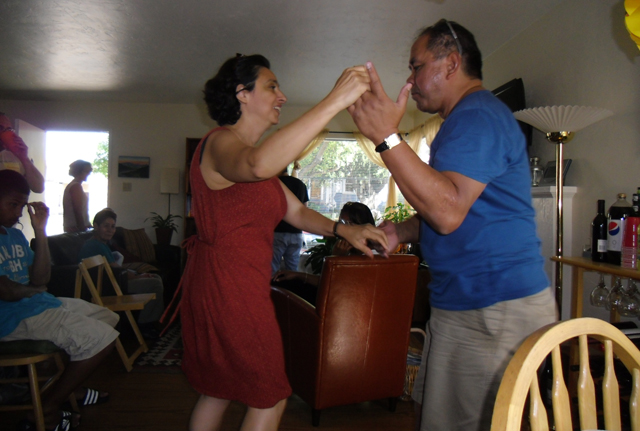Now, my skin is not dark, but that doesn’t really make a difference, because I was born in Puerto Rico. You see, we have a saying that goes, “Whomever doesn’t have (ancestry) from Dingas, has it from Mandingas,” meaning, after 500 years of blending, African genes and culture are a living part of every Puerto Rican experience. That’s why those historical photos of people along the staircase at MoAD felt so close. I could almost hear their voices.
I realized I have been spending too much energy trying to blend in to my new surroundings and culture, pushing my Caribbean identity to the basement. Memories of this archived life began to pop open like blooms in the spring.
We then went look at the Stories of Acquisition and Reclamation exhibition, where it became apparent how important is to keep history authentic, I remember thinking that time not only yellows the paper, but also blurs the facts and how much I wished those images were explained by the voices of those who lived through it. It all made me want to dig into my personal experience of migration to tell a clarifying tale.
Having moved to USA in 1996, I found listening and dancing to Caribbean rhythms helped relieve my home sickness, so I collected images to describe Salsa’ music beginnings and development. During our visit at MoAD, we also watched excerpts from the 1958 film, St. Louis Blues, about the life of legendary bluesman W.C. Handy. I didn’t know it then, but once I started doing research for my project, I found him again in, of all places, Cuba. Turns out that blues and Cuban Son music both began with African people, and developed in very close neighborhoods, influencing each other along the way.
I regularly use a personal computer and have very limited knowledge of Macintosh systems, so I wasn’t sure I could learn quickly enough to operate the iMovie program successfully. Fortunately, the KQED workshop staff was very understanding and incredibly patient with me. I had extra time to work on my project at the station, and I have now completed and published a 5-minute video. Seeing how easy and quickly one can produce a reasonable quality video makes me want to produce many more. I have many more ideas, and I see plenty of applications for this technique. Here are some ways I plan to use my video as a teaching tool in the future:
As an introduction to a salsa dancing class, so the prospective dancers gain a deeper understanding of the genre. Canyon School is having a Family Salsa Night fundraising event in May 2012. Participants will get an introductory class to Salsa dancing. This video will be presented to the audience as part of an educational effort to dispel myths about the genre. After a brief introduction of myself and why I am presenting this information, I will play the video and ask the participants for questions. There will be a 15-20 minute open discussion and then I will:
- Introduce the clave, maracas and guiro as small percussion instruments
- Play music to recognize the sound of clave and maracas
- Explain the technique of playing clave and maracas
- Play more music so participants can practice
As an aid in prevention of prejudice and violence prevention. I know a 12-year-old student who just started to learn salsa at Destiny Arts Center in Oakland. I am going to offer the video to the class for viewing and discussion. Destiny Arts is committed to prevent isolation, prejudice and violence among young people. Salsa music is a perfect example of how the Africa, African American and Latino elements have combined in a product that has become universal.
As a feature for Black History Month: Classroom or music teachers can use the video to highlight the contribution of African people to Cuban music, Jazz, Blues and many other celebrated contemporary genres.
As a feature for Cesar Chavez day: Teachers can use the video to illustrate the contributions of Latino immigrants and the benefit of cultural exchange.
Thank you to the amazing Laura Echegaray for her testimony and wonderful video. Let’s Salsa!
